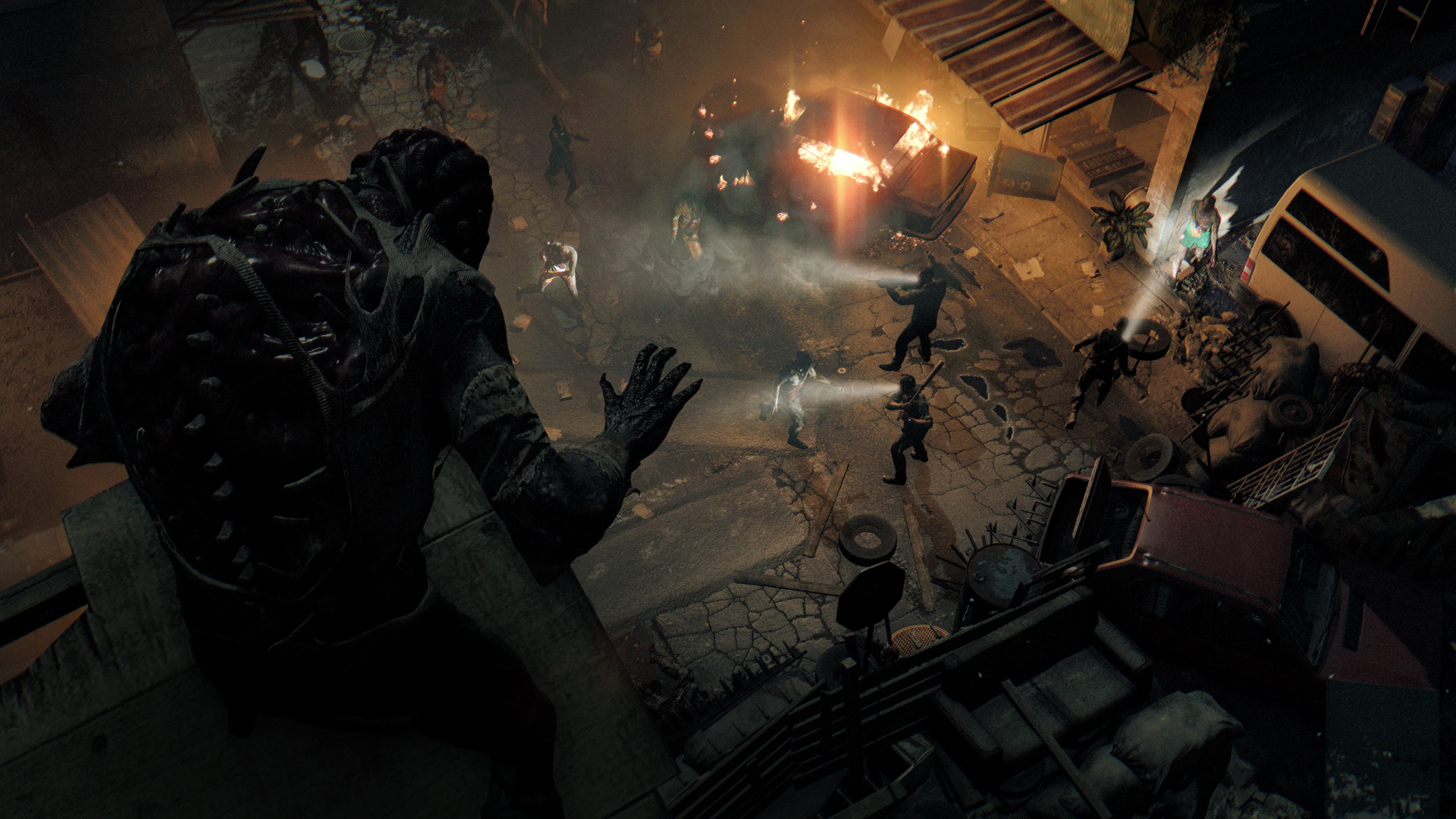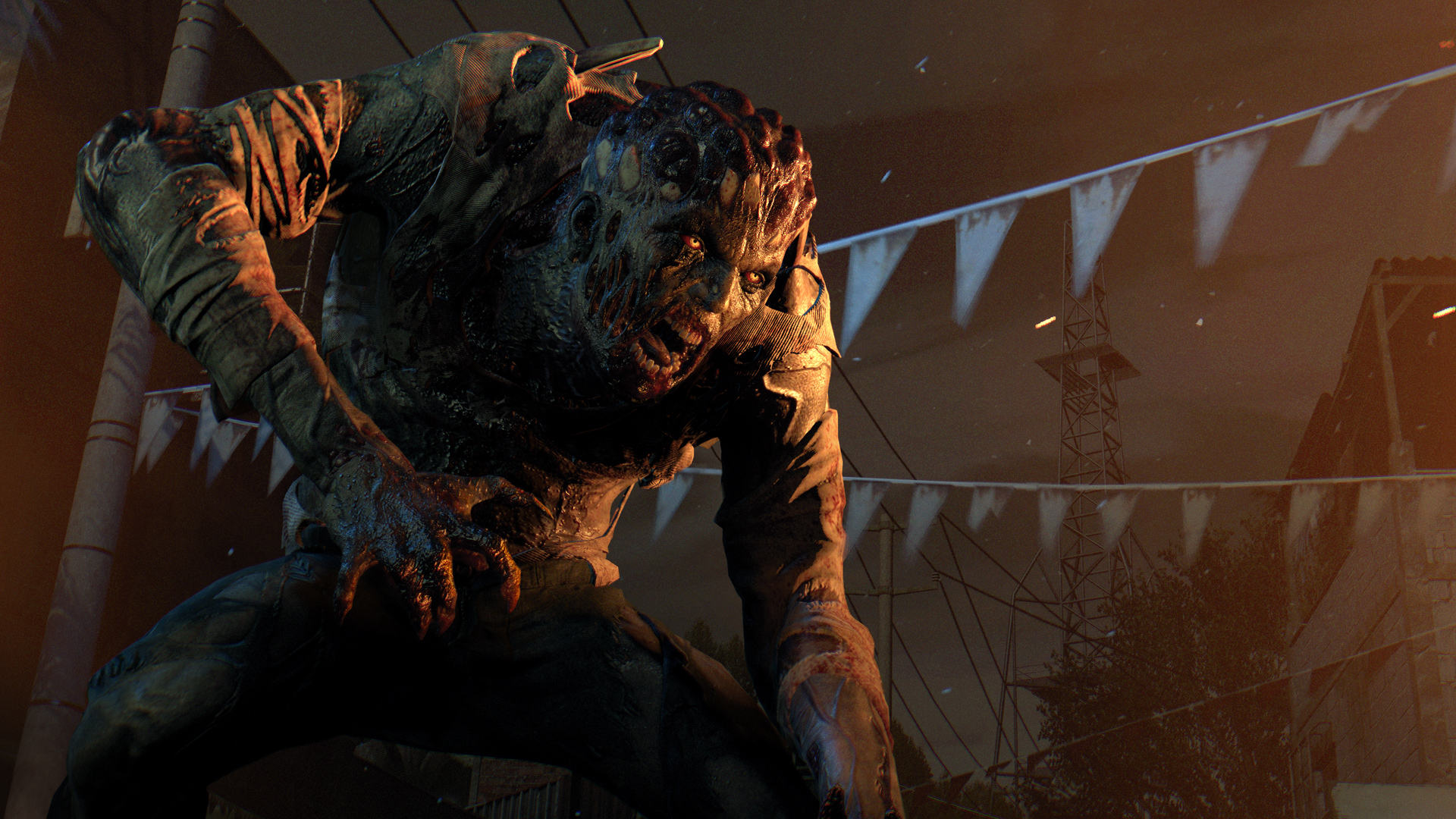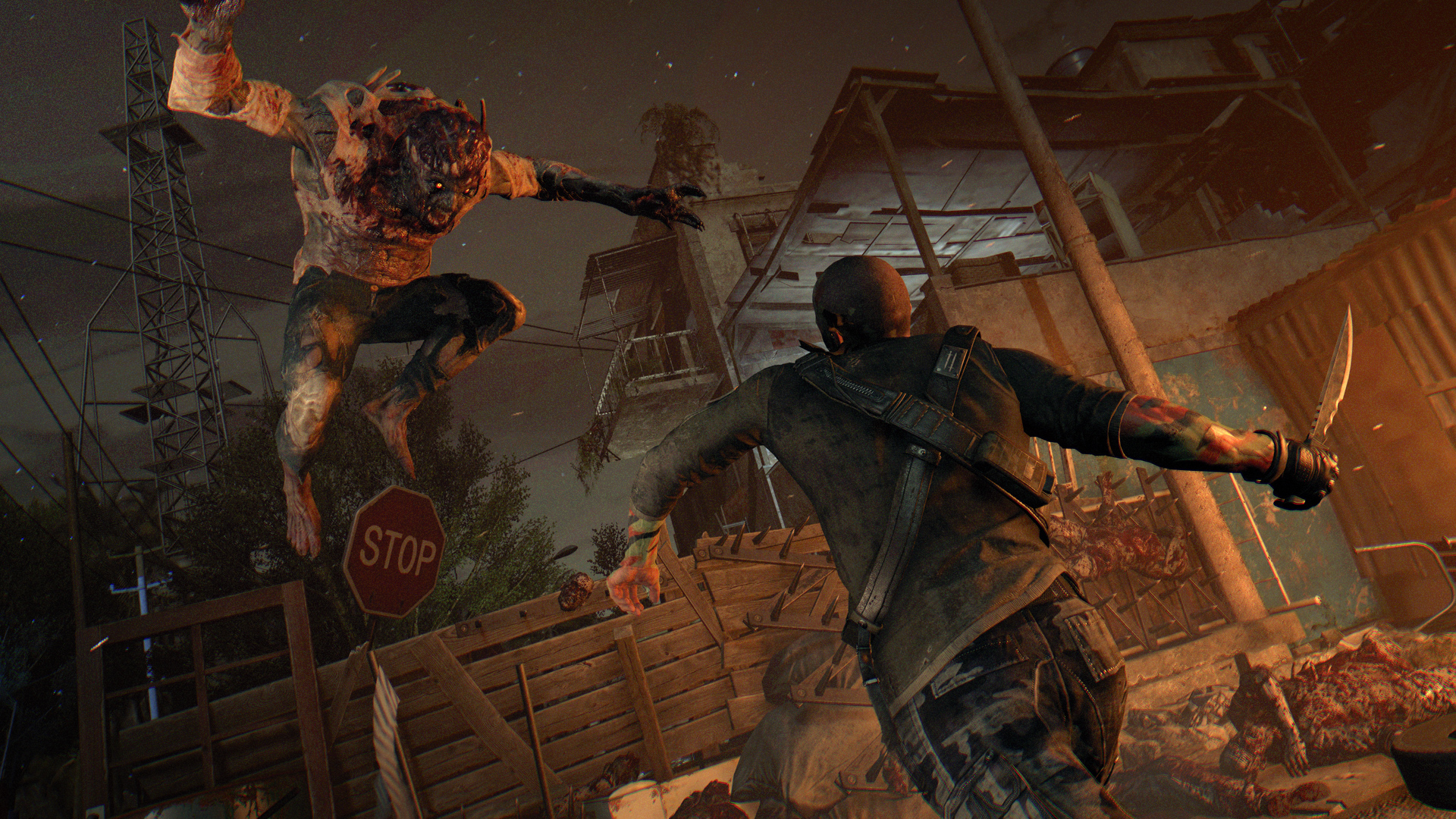Zombies during the day? No problem. Zombies at night? Oh god!
Dying Light doesn't contain the words "Dead Island" in its title, and yet developer Techland sticks extremely close to its zombie roots: hack the undead horde with melee weapons, invite a few friends, and do your best to survive the invasion. Dying Light emphasizes transitional tweaks with parkour elements and an important day/night cycle, but those mechanical variations don't do enough to create a sense of evolution within the worn zombie framework. The hour-to-hour grind counteracts the game's brief moments of brilliance and results in an experience that drags over time.
The familiarity of the typical zombie narrative contributes to some of Dying Light's tedium. The fictional city Harran finds itself overrun by zombies after a virus outbreak, and it's up to GRE undercover operative Kyle Crane to retrieve files for a potential cure. Motives shift, allegiances change, and characters die, but all of it fails to make a significant impact. Characters in particular feel too one-dimensional or predictable to establish any kind of pathos. The game plays it safe far too often with its narrative, and thus the incentive to complete the many story missions slowly but surely dissipates.
On the other hand, this open-world zombie-smasher attempts to take genuine strides in its design with the introduction of parkour traversal. Everyone's go-to comparison appears to be Mirror's Edge, but Dying Light moves at a far more deliberate pace. Eventually players will hop around rooftops with no problem, but the parkour system takes time to develop and become second nature. The progression of parkour traversal, particularly in the abilities unlocked over time, instills a sense of accomplishment and player growth that's one of the game's greatest strengths. Oddly enough, it also contrasts the open-world structure.
Harran occupies a large amount of space. The first time I zoomed out on the map, I was genuinely surprised by its size. The sheer number of zombies in the game and the overall scope of Harran stands out as an impressive technical achievement, but it doesn't entirely benefit Dying Light's emphasis on parkour. Eventually the need to run to a safehouse or a mission all the way on the other side of town becomes tedious, and the high volume of sidequests only compounds the issue. It feels as though Dying Light loses focus as a single-player experience because of its open world, one that features little environmental variety and repetitious missions.
The first few hours of the game are the most egregious as it relates to mission design. Kyle Crane and in turn the player essentially becomes a glorified errand boy—run over here, flip the switch, collect the item, clear out the area, or all of the above. Story missions progress past that point, but it takes a while and there are still plenty of side quests that ask similar things of the player. I can't look back at the mental fatigue of those early missions with fond memories, but the fatigue of night time in Dying Light tells an entirely different story.
True to its name, Dying Light incorporates a day/night cycle as one of its central features. The general strategy is simple—complete missions and scavenge for materials during the day and avoid night like it's the plague. Volatiles come out to play when the sun goes down, and they're not your run-of-the-mill zombies. These guys are just as fast as the player, know how to climb, and will tear players limb from limb if given the opportunity. The mini-map even gives them vision cones to aid in stealth and avoidance. The best part: press the triangle or Y button during a chase to look back at the Volatile. It's always a terrible idea, and I always do it. (I mean, humans are naturally curious, right?) The tension and thrill of nighttime exploration truly shines in Dying Light, and it even rewards risk-takers with double the experience.
Dying Light separates experience into three categories—agility, power, and survival. Jump around a lot to earn more agility XP. Whack enough zombies in the head to earn power XP. And of course, complete missions to improve your survival skills. All three categories have their own skill trees, so players have to focus on specific categories to earn specific abilities. The way in which the game directly rewards experience for actions establishes a cause-and-effect system of player growth that greatly improves the campaign. It also rewards players with cool-looking abilities, because everyone needs to kill zombies in style. My personal favorite is the dropkick ability—it never gets old.
As fun as it is to execute a dropkick, it's not the most common method of zombie disposal. That honor goes to melee weapons, and Dying Light includes more than anyone could ever want. The game provides some relatively weak weapons to start off, such as table legs and rusty pipes. Eventually players graduate to blades, hammers, and handy upgrades that add various effects to weapons. Ever want to hit a zombie in the head and electrocute them at the same time? Now you can!
It's best to single out zombies because of the stamina system, which completely drains after just a few swings. Also, regular zombies take far too many hits to kill with some of the early weapons. I understand their strong desire to eat brains, but I have giant hammer. I feel like I should be able to take care of business with relative ease. Nevertheless, melee combat feels visceral and satisfying throughout the entire game. Just be sure to constantly pick up melee weapons, as they break after just a few repairs.
Combat is made easier with the help of a friend, and cooperative multiplayer is another area in which Dying Light excels. In fact, it's an area in which the game's open world makes the most sense. Almost all my time with other folks in multiplayer was spent away from story or side missions. Instead, we'd run around Harran decimating zombies, or take part in a number of dynamic co-op challenges that randomly pop up during multiplayer sessions. So if players want to see who's the best at killing zombies or collecting loot, random challenges are there for bragging rights. But my favorite moments in multiplayer took place at night, specifically the incorporation of the Be the Zombie mode. It allows players to become special zombies and invade a co-op group at night in a Left 4 Dead-esque PvP scenario. It can be scary, it can be funny, and it's always a good time.
As much fun as the co-op multiplayer in Dying Light provides, it's the same kind of fun Dead Island fans got out of that series. The game attempts to set its own path with parkour traversal, but it's not enough of a departure to establish a singular identity. Killing a bunch of zombies still has its charms in this day and age and I'll likely have nightmares about the dying light of Dying Light, but Techland's latest proves to be an uneven experience. Ultimately it's a game I appreciate for its ideas more so than its execution.
-
Parkour traversal
-
Weak narrative
-
Nighttime is intense
-
Plenty of content
-
A slog with so many missions
-
Open world structure largely detracts from the experience
-
Repetitive fetch quests
-
Fun multiplayer
Dying Light
-
Dying Light #1

-
Dying Light #2

-
Dying Light #3








